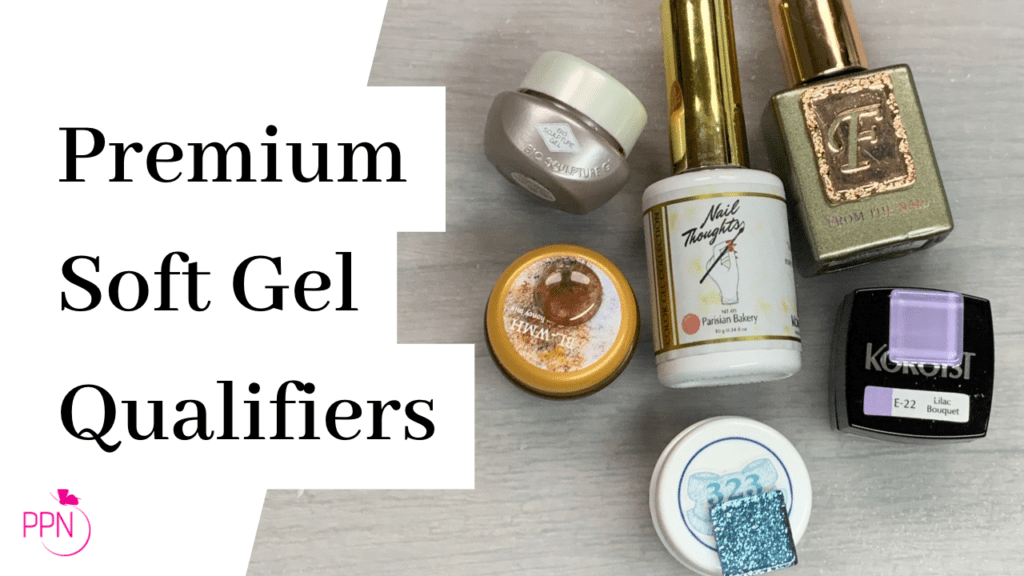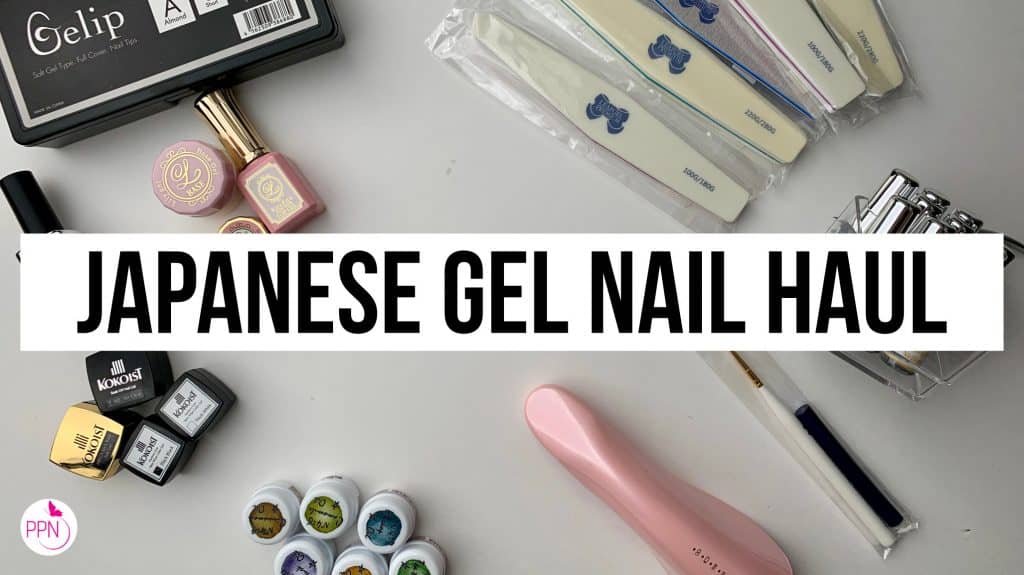Is it just a snobby way of saying, my gels are better than yours? Hmmm… maybe?
When you say something is premium, it usually is of a better grade (so quality) but especially price. Think about how often you say this or that is “premium priced”; think about premium gasoline, better quality, higher price.
In much the same way, premium soft gels are true, better quality, and higher priced.
Do I mean only soft-potted gel brands or is Japanese gel the only premium gel out there? No. When my students want to label themselves or write something descriptive on their IG bio because that’s important.

I strongly believe that the riches are in the niches and I go over that in very much detail in my free masterclass; if you haven’t watched it, you can click HERE to access it immediately, and you also have the opportunity to join me in the Master Gel Nails course once you finish watching the masterclass, just as a side note.
So it can because a bit of a struggle for my students because they like Japanese soft gel, but they also like other gels like Korean gel nail products. Can you blame them? Everything is super cute, and they are compatible; as far as I know, I’ve never had an issue. They are soak-off gel. They’re premium gel, etc.
There are other brands out there like BioSculpture, the inventors of soak-off gel nail systems. They started and continue to use the pots model.
Alright, so with that being said,
Let’s dive into the 3 qualifiers of a premium soft gel.
#1 Higher Priced
Do not expect premium soft gel formulas not to come with a high price tag attached to them. For example, BioSculpture is a high-quality, hypoallergenic system that costs a pretty penny. What does that mean? It means that BioSculture uses quality ingredients in the very secretive property blend that makes them the most hypoallergenic product in the market; they have a clinical rating to prove that if you want to check that out HERE.
So I often get asked, “So why don’t you still use BioSculpture gel?” The quick answer is that I started with BioSculpture, and it wasn’t the price point. Back at the salon, I ordered a pot of 25 grams of base gel every month for $130, so at trade shows, I would stock up for the entire year; yeah, you can do the math. I did that because I loved the base gel for my clients, but then my clients started asking for more fun stuff and longer coffin nails so Biosculpture did not have a strong builder gel that suited my needs at the time, so I started switching to Japanese soft gel systems at the same time these systems started making a name for themselves, and it seemed perfect because they were soft potted gel like Biosculture and then I could incorporate the two.
So when I started teaching, I gravitated more towards Japanese soft gel because of all the fun stuff and the strung builder gels.
Lastly, on that topic, since then, Biosculture has updated its products, and now you can do all the fun stuff, too if you don’t mind paying the premium price. Because you are in business, they only sell their products to professional nail techs to use them. All for them, love them!
With education, I wanted to lead by example because I always tell you that you shouldn’t mix more than three brands of products. Because things get confusing, you won’t be able to troubleshoot, and you won’t be able to use a line of products to its full potential because you are trying everything.
Yes, they are expensive, but you only need a little bit. I recommend you take some type of training, so you don’t use more products than what you need. People always ask me how long a jar of 25 grams base gel lasts me (their jars start around $80). The more affordable premium soft gel option is Kokoist. If you want a comparison chart of all the Japanese gel nail brands I use and how each of their products compares, I’ll share this eguide with you (it’s only $7), and you can reference that guide and see how many sets of nails each product yields so I do recommend you check that out when you are ready to shop.
If you want to offer an upgrade to your clients, something more high-end, I’ll definitely recommend Biosculpture.
#2 Small Batch
These gels are created in small batches and do not manufacture all around the world and if they do, they keep it close-knit. For example, in the US, there are only a couple of Kokoist and Vetro distributors and only one Leafgel distributor, so production is more on the craft-size side.
Almost made to order, and few distributors.
I once heard from our friends at Vetro that they treat their manufacturing almost like fresh produce. They make small batches and don’t let them accumulate on the shelves; they only make the amount they need, the demand, right? They like to keep it fresh and avoid selling old products.
#3 Non-Toxic And Few Dilution Ingredients
Yes, there are so many ways to label if a product is manufactured responsibly, right? The most common you see if “non-toxic”. Now I did some research on that term and what it means, and I couldn’t find anything that was really concrete unless things have changed, “non-toxic” is not an FDA-monitored term so the manufacturer or distributor has to define what that term means.
In essence, if it gives you a headache or makes you want to throw up, then you experience some type of toxicity level, right? It doesn’t necessarily mean that you are allergic. We haven’t talked about allergies yet, which might be toxic. I don’t know. This is based on what I found; please do your own research.
Usually, when they say non-toxic, they mean that they didn’t include chemicals that can make you feel like you had too much of it without consuming it. For example, camphor is sometimes therapeutic or used for medical purposes, but if you use too much, which can be in nail products, you can experience toxicity.
Another thing they can say is “ toxic chemicals can be carcinogens” formaldehyde, for example, nail products are no longer being made with this chemical because it’s linked to cancer-causing ingredients.
Now, when it comes to premium soft gels, Japanese gels, Korean gels, Biosculpture, or any other nail system, you must do the due diligence and download the SDS sheet, the Safety Data Sheets. You can get these from the manufacturer, and you’ll be able to see the levels of monomer concentration. What you are looking for is that most of the product is a resin, not a dilution ingredient. With soft potted gel systems, we actually just have a monomer and a resin thinned down to provide adhesion. So we don’t have highly volatile, stinky bonder agents like ethyl acetate and butyl acetate. That’s why these systems have almost no odor. Instead, they have some type of Hema, and others will have other monomers that are not hema related.
You want to focus on the concentration levels. For example, if a gel has a higher concentration of a monomer like hema or ethyl acetate, 30% or higher, it not only makes it more allergenic but also less gel material.
True gels, premium soft potted gels are going to be more gel-like with fewer dilution ingredients, and sure they can be ten toxic-free or non-toxic and hypoallergenic, meaning the concentration of the monomers are less than 20%
Alright, those characteristics define soft gel, whether you use it in a pot or in a bottle. When they meet the three qualifiers, then I consider them premium soft gel.
That is it for me today. What did you think of today’s topic? Drop your comments below; I’ll see you at the next one!
Content written by Paola Ponce
Loved this blog? Then I think you’ll love learning more about my journey as a specialized gel nail solopreneur in the nail industry. Click here to get instant access to my free masterclass. These blogs are copyrighted material, and any use of this blog is not permitted without written concern first. Some of these blogs contain affiliate links that give us a small commission when qualifying purchases are made. Thank you for being so supportive, which helps us to continue creating valuable resources and content like this.


![[[ Nail Thoughts X Kokoist ]] Bottled Gel Launch | All COLORS SWATCHED](https://paolaponcenails.com/wp-content/uploads/2020/11/ntswatchesnewthumb-1024x575.jpg)